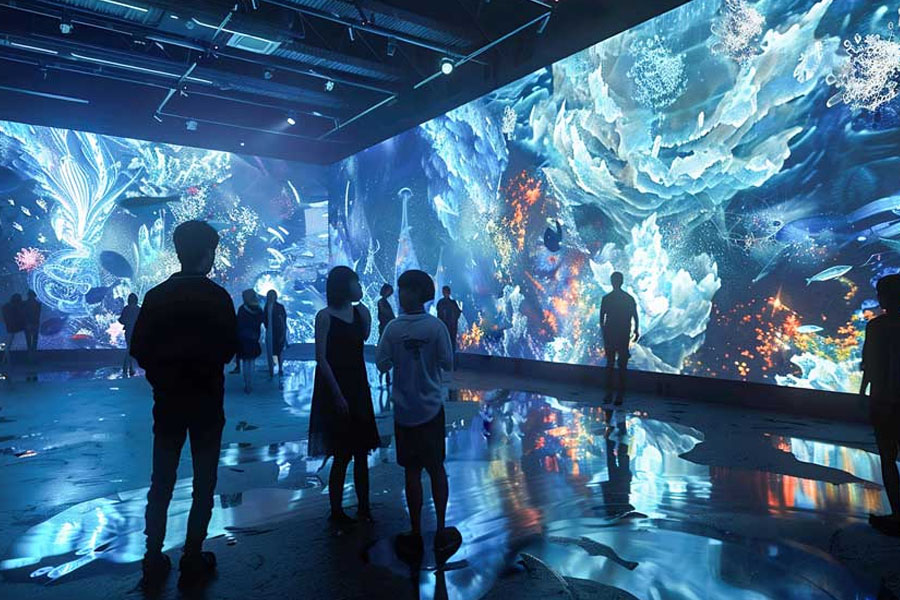Now Reading: The Era of Seamless Visual Experiences: How Tech Is Changing What We See
-
01
The Era of Seamless Visual Experiences: How Tech Is Changing What We See
The Era of Seamless Visual Experiences: How Tech Is Changing What We See

Introduction
We’ve slid into a moment where visuals are expected to be flawless — not just crisp, but fluid, instant, and utterly convincing. From the hush of a home theater to the raw intensity of a live concert LED wall, audiences want images that behave like magic: no stutter, no mismatch, no second-guessing. Behind that magic sits a stack of technology quietly choreographing pixels, timing, and scale so the viewer never sees the seams.
Why Seamless Visuals Have Become the Norm
Visuals are no longer background decoration; they’re the narrative. People respond to motion and detail with the same instinctive speed they react to faces and gestures, so glitches interrupt understanding and break the spell. Modern expectations have evolved: it’s not enough to show an image — it must arrive on time, in sync, and in the right proportion across every screen in the room.
A Growing Demand across Multiple Sectors
What began as consumer appetite for 4K and buttery frame rates has metastasized into broadcast studios, corporate boardrooms, and mission-critical control centers. Live events need perfectly timed visual cues; remote collaboration requires reliable, lag-free screens; surveillance and utilities depend on accurate, real-time feeds for safety. The tech that once only mattered to cinephiles now underpins commerce, public safety, and entertainment on every scale.
The Vital Role of the Video Processor
If screens are the performers, the video processor is the stage manager — the unseen system that switches, scales, times, and distributes content. It ingests feeds from cameras, laptops, media servers, and live sources, then decides how to display each one without introducing visible delay. Whether you’re blending multiple inputs onto a video wall or routing a single source to a fleet of displays, the processor keeps the show coherent and the audience fooled into thinking nothing complex is happening.
What Modern Video Processors Actually Do
They do more than resize pixels. Modern processors handle real-time source switching, combine multiple windows into a seamless canvas, apply dynamic scaling for different screen shapes, and keep audio locked to picture. They also manage distribution without signal loss, and in critical rooms provide redundancy so the visuals stay up even when something in the chain stumbles. In short: they make complexity look effortless.
Technologies Enabling Seamless Visuals
Several engineering advances make that effortlessness possible. Ultra-low latency pipelines let interactive and live applications behave in real time. Support for ultra-high resolutions like 4K and 8K means images retain detail when stretched across massive arrays. Multi-standard connectivity (HDMI, SDI, DisplayPort) keeps older gear working with new systems. Intelligent switching smooths transitions so the viewer never sees a cut, and built-in redundancy protects high-stakes environments from single points of failure.
The Operational Stakes: Where Smoothness Matters Most
Not all image problems are cosmetic. In a newsroom, a missed frame can ruin a broadcast cue; in a control room, a delayed camera feed can delay a life-or-death response; in a concert, an out-of-sync LED wall kills the moment. That’s why industries that care about precision invest not only in higher pixel counts but in the plumbing that guarantees those pixels behave predictably under pressure.
The Video Processor You Can Trust: DEXON’s Video Processors
For organizations that need proven reliability, certain processor lines have earned reputations for ruggedness and flexibility. These systems are built to juggle multiple sources with ultra-low latency and offer tailored options for everything from single-screen deployments to sprawling multi-screen video walls. Their architecture focuses on predictable performance so IT managers and producers can focus on content rather than crisis management.
Smarter Visual Infrastructure, Better Experiences
Screens only perform as well as the systems driving them. Smart infrastructure ties together source management, timing, and distribution, so whether the output is a single boardroom display or a stadium-grade LED wall, the result is cohesive. When processing, networking, and display technology work in concert, experiences become immersive rather than merely impressive.
Design Principles for Seamless Visuals
Good visual systems are engineered with certain principles in mind: prioritize low latency, preserve signal integrity, ensure redundancy, and build for scalability. Those priorities guide decisions about which processors to use, how to route signals, and how to architect failover so that a single component failure doesn’t cascade into a visible disaster.
The User Experience Imperative
Ultimately, seamless visuals are about human perception. When motion is smooth and synchronization is tight, the viewer trusts the content and stays engaged. When visuals lag or break rhythm, attention fractures and the whole effect is diminished. Designers and engineers aim to make the technology transparent so the moment feels real, immediate, and cinematic.
FAQ
What’s driving the demand for seamless visual systems?
Audiences and operators expect higher fidelity, lower latency, and synchronized displays across environments, which drives demand in entertainment, corporate, and control-room applications.
How does a video processor actually work?
A video processor ingests multiple sources, performs real-time switching and scaling, and distributes synchronized outputs with minimal latency.
Where are these advanced processors used?
They’re used in home theaters, live events, broadcast studios, corporate conference systems, control rooms, and anywhere synchronized visuals matter.
Do consumers need 8K for a seamless experience?
Not necessarily; perceived seamlessness depends more on latency, synchronization, and scaling than raw resolution alone.
Why is low latency so critical?
Low latency keeps video and audio in sync and maintains real-time interactivity for live events and control systems, preventing perceptible delays.





















